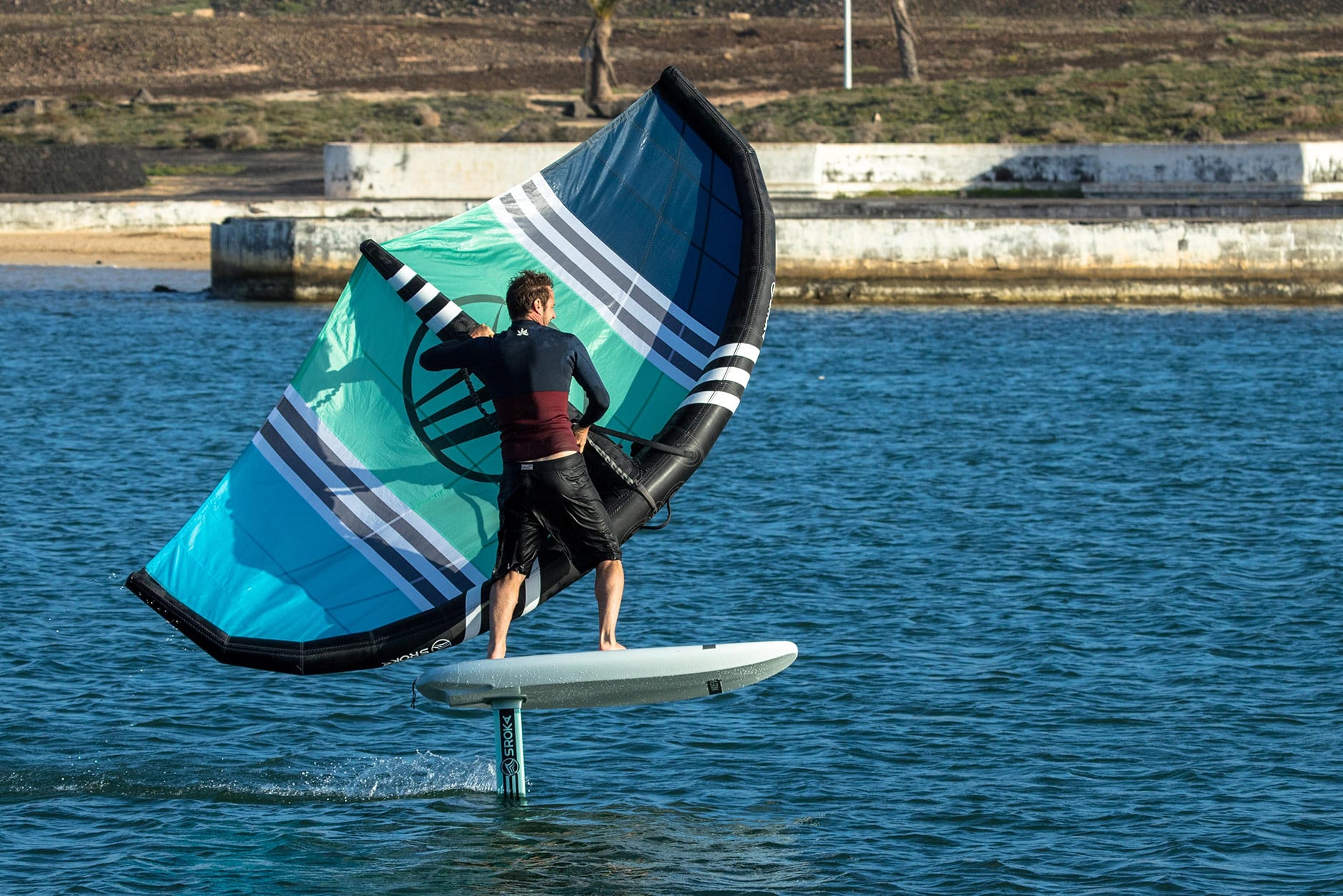Andalusia, a sunny region in the south of Spain, is a true paradise for water sports enthusiasts, especially wing foil. With its vast and diverse …
Wing foiling: how to succeed in a 360?
The 360 wing foil is a maneuver that allows you to start freestyle flat on the water. This trick, which involves making a complete turn on oneself while maintaining flight, is not only impressive to see but also incredibly rewarding to perform.
Mastering 360° requires a good understanding of the fundamentals of wing foiling, complete coordination between the upper body and the lower body. In this article, we will guide you through the key steps to achieve a successful 360° wing foil, starting with the essential basics to the advanced tips that will make you an expert in achieving a 360° wing foil. Whether you’re a curious beginner or looking to improve your skills, this guide is designed to give you the basics for 360° success
Ready to embark on the 360° wing foiling adventure ? Follow us step by step and find out how to master this trick with grace and confidence.
Wing foiling, how to succeed in the 360°: the Prerequisites
1. Mastery of the fundamentals of wing foiling
To succeed in a 360° wing foil, it is essential to master the basics. Before attempting this maneuver, you must master:
- Balance on the foil : You need to be comfortable with managing balance on the foil, whether in a straight line or in a turn with the ability to change the position of the feet on the board.
- Wing Control : Having good wing control is crucial. You need to know how to position and move it in the wind to get the necessary propulsion or against square its power.
- Basic turn : Knowing how to jibe is essential before attempting a 360 and starting to make tacks
- Have enough movement speed to stay in the air for the entire 360°
2. Optimal conditions
Optimal conditions for practice are crucial. Choose moderate wind conditions, not too strong or too weak, for better control and increased safety. It is also advisable to practice on a body of water without too many waves or currents to facilitate the maneuver.
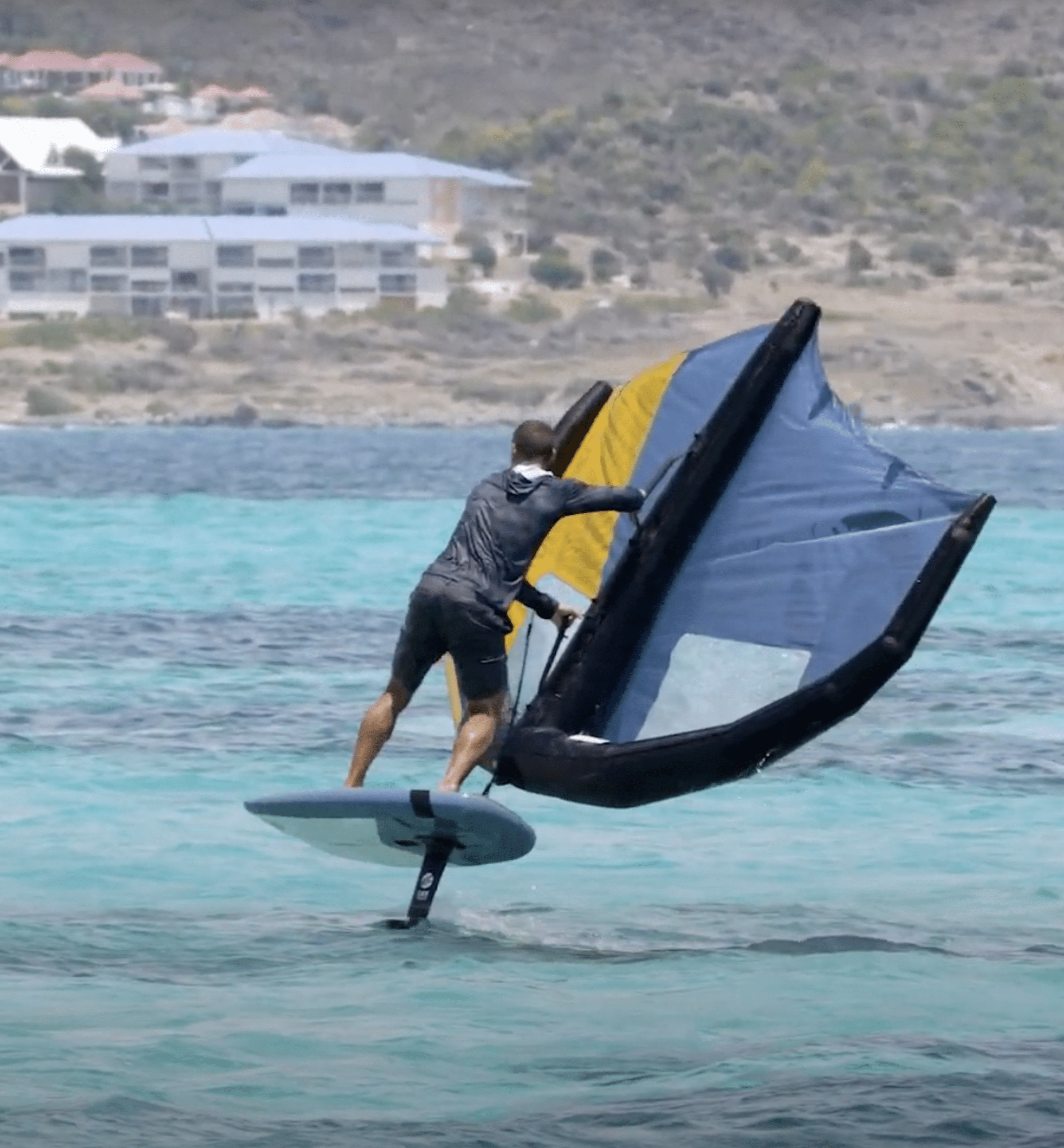
3. Suitable equipment for a 360°
- Foil : Use a foil adapted to your level and size. But above all a foil that glides and stays in the air for a long time. For example, large wingspan foils that will give you glide and long flight time.
- Wing : Choose a wing of the right size according to the wind conditions. A slightly smaller kite will be easier to rotate and will be less physical.
Making sure you meet these prerequisites will increase your chances of landing your 360 wing foil and improving your freestyle experience on the water.

The different steps to a successful 360°
Breaking down the different steps to do a 360° in Wing foiling:
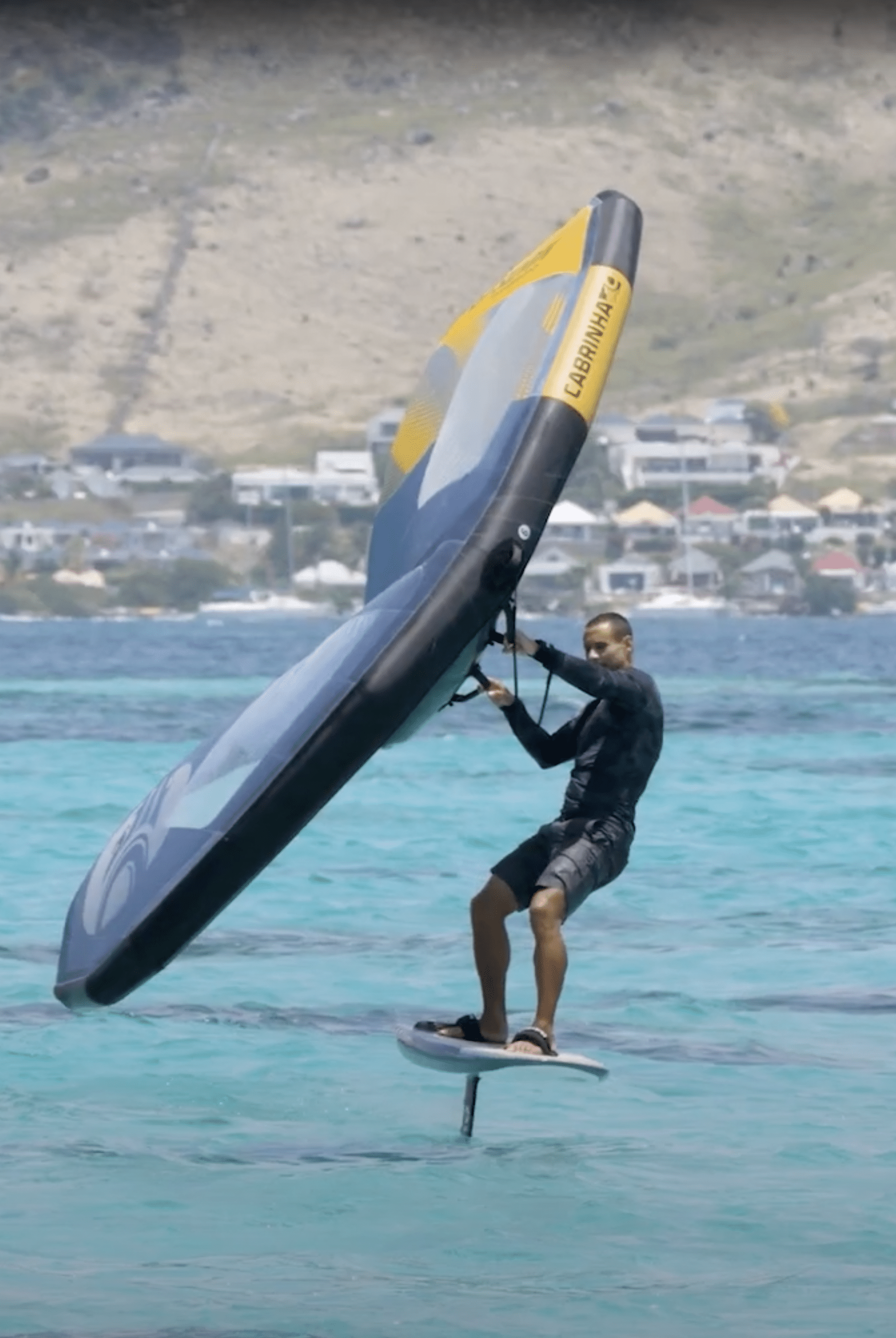
1. Preparation
- Starting position : Make sure you are comfortable with your wing foil and have a good initial speed. Too low a speed will not allow you to finish your rotation. The starting position should be balanced and sandy. Ideally remove all your straps or if you don’t know how to sail without straps, at least remove the rear straps. Your back foot can be shifted downwind to give you more stability.
- Get more speed before engaging the 360°
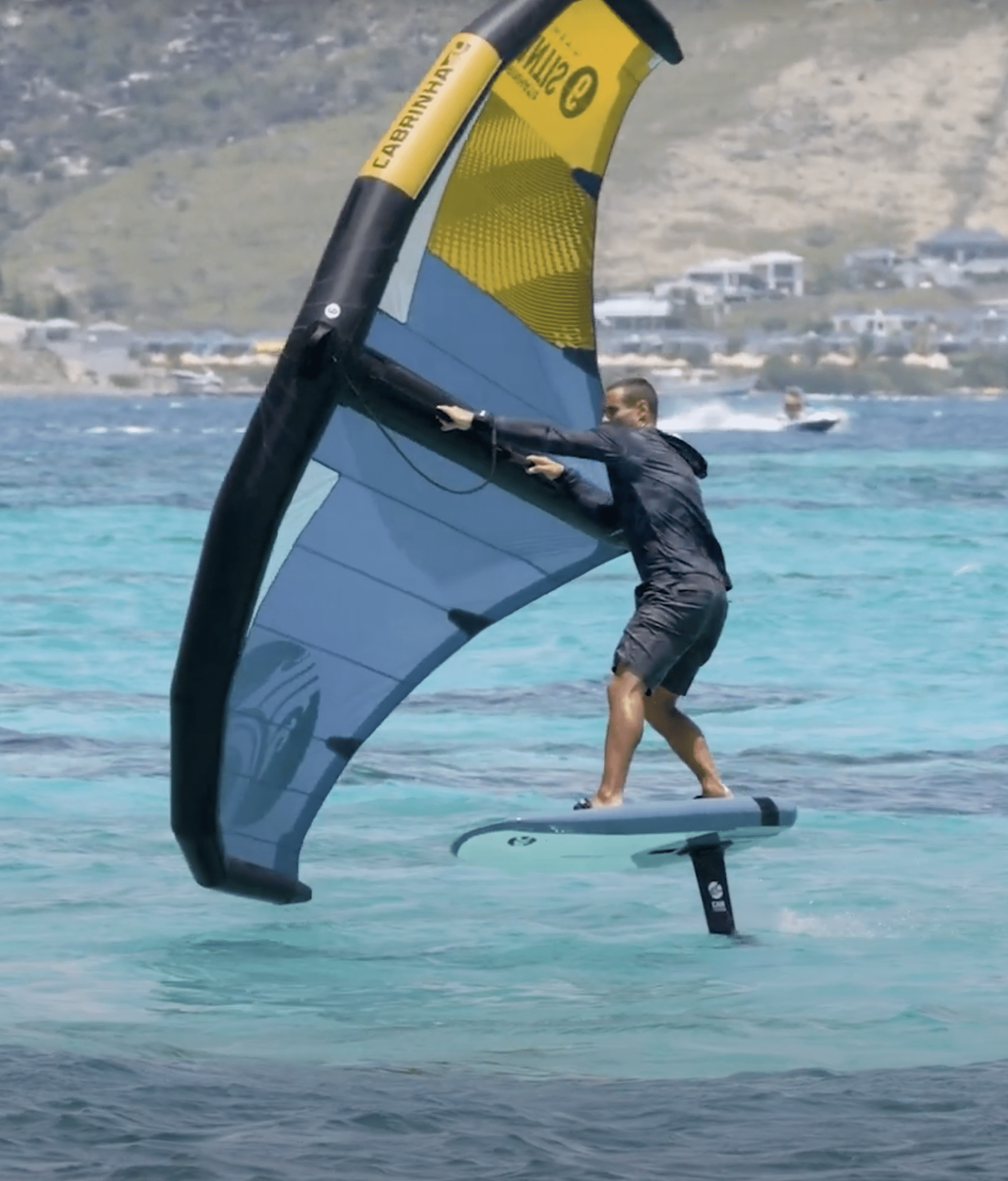
2. Initiation of the Rotation to succeed in the 360°
In a basic way, a 360 will always start as a jibe in terms of the supports on the board. So imagine yourself just making a jibe.
- Trigger the rotation : Start by pressing down on the toe while tilting your body slightly towards the inside of the turn and turn your shoulders in the direction of the desired rotation
- Using the wing : Use the wing to help you turn by positioning the leading edge downwards to facilitate rotation without touching the tips in the water. Push the front hand forward and down and bring the back hand back to the head position to orient the wing and begin the rotation.

3. The 360° Rotation
- Body coordination : Continue to press the supports. When you have passed with your back to the wind, Come and counter the power of the wing which will want to inflate in the opposite direction, so your support and balance on the board will be fundamental. When you are against (facing the wind) you have to succeed in completing your rotation. Bring the wing back above your head by pushing on the front hand and bringing your front hand over your head. This will tip your wing in the right direction while decreasing the power in the wing and thus facilitate the end of your rotation.
- Maintaining Balance : Focus on maintaining your balance on the foil using your legs.
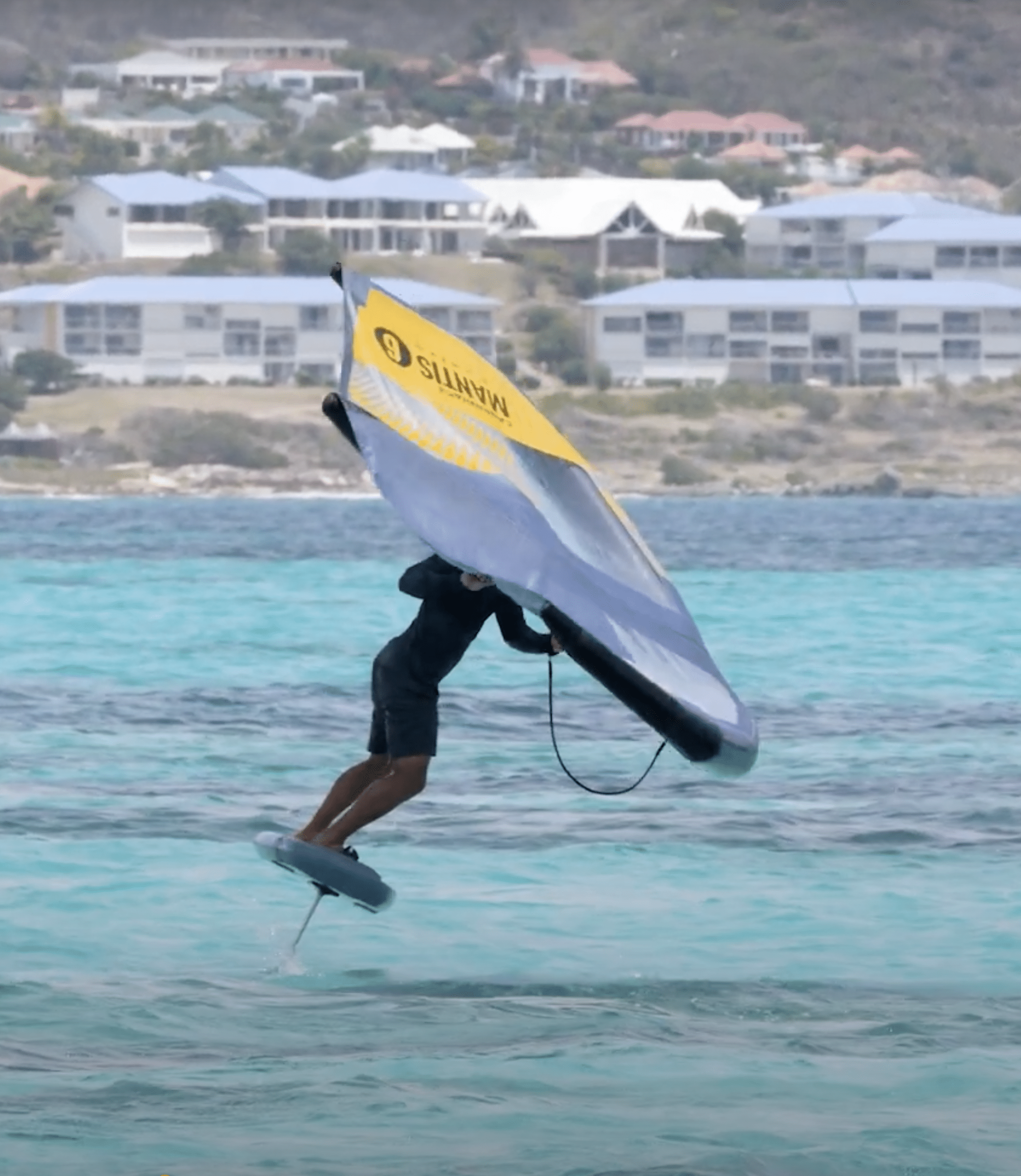
4. Height Control
- Height adjustment : Use the foil to control your height during rotation. Be sure to maintain a consistent height to avoid touching the water. You can start with a little more height because as you rotate and lose speed, this greater height from the start will bring you a longer flight time.
- Leg use : Bend your knees slightly to absorb variations and maintain a balanced position.
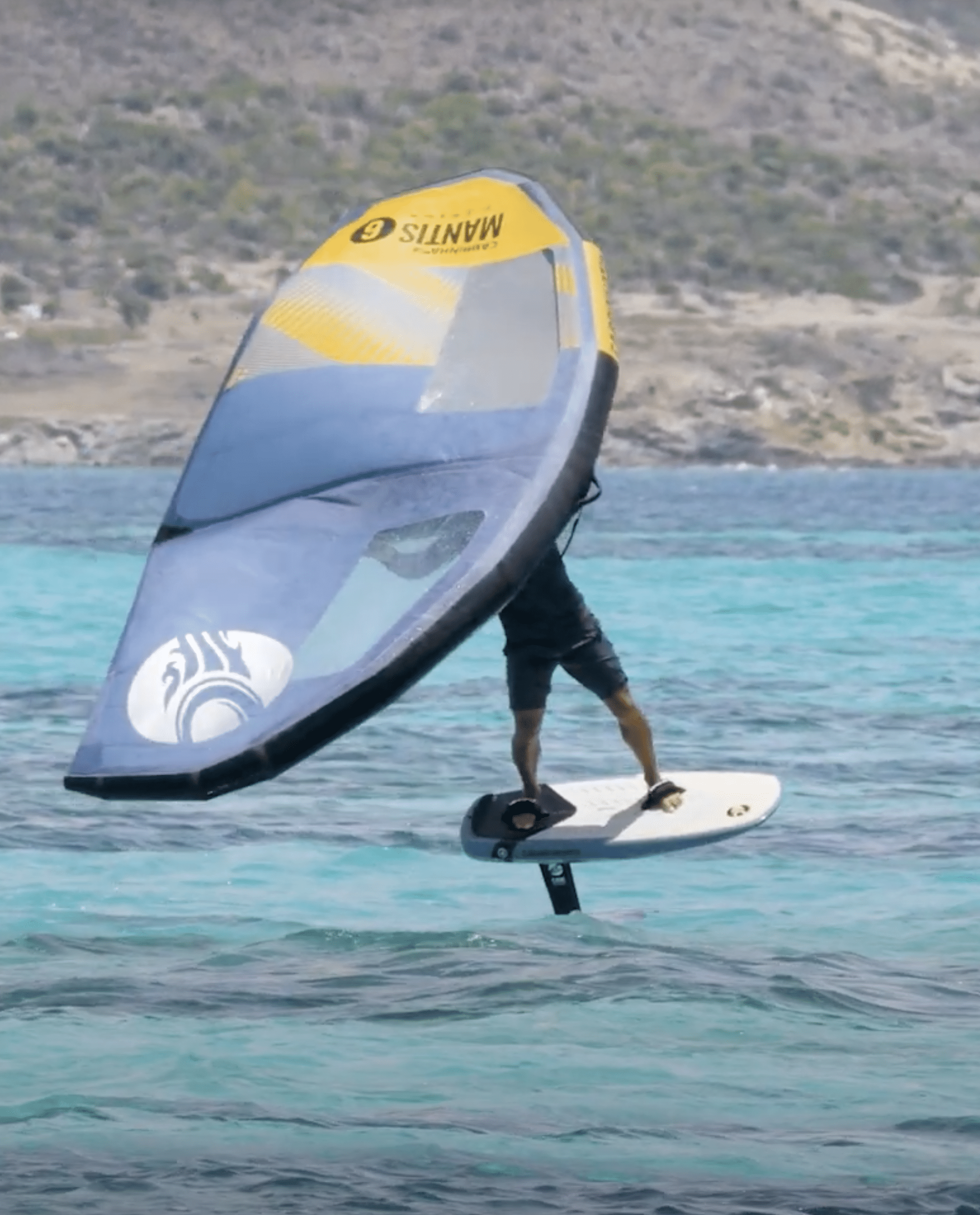
5. Termination of the 360° Rotation and Resumption of Speed to Achieve Your 360°
- Finish the rotation : Continue to press the tips of your toes to finish the rotation. If your board touches up the water, it means that your radius of curvature is too large. So go for a shorter bend radius.
- Wing adjustment : Pull on the back hand and push on the front hand while lowering slightly to regain speed and stability.
Additional Tips
Regular practice : if you want to progress quickly in 360, we advise you to block 20 to 30 minutes in your session and focus only on this maneuver. There is no secret, repetition concentrated on the same period will facilitate your learning.
Error Analysis : Practice spotting and correcting your mistakes to improve your technique. Focus on the wing position and your support.
Common mistakes:
- When I’m against (facing the wind) the kite pushes me to the outside of the turn and makes me fall).
Solution: Before you arrive Facing the wind (against) push on your front hand to position your kite above your head and pull on your back hand at the same time. This will allow you to position your kite in the axis of the wind to prevent the wing from unbalancing you.
- Toowide and my board comes to touch the water.
Solution: Reduce your bend radius to turn tighter and regain speed faster.
The key points to succeed in the 360° wing foil
- Start as a jibe; Stand on tiptoe to steer in the direction of the wind
- Tilt your wing by positioning the attack board facing the water
- Continue your rotation, when the kite starts to push you counter, it’s time to push on the front hand again and pull on the back hand. The attack board of the wing comes to position itself above the head. This will allow the wing to be repositioned in a Neutral position allows you to complete your rotation easily without getting thrown off balance
- Continue to shoot towards the end of the rotation to regain speed and maintain your flight.
Performing a 360 in wing foiling is a maneuver that, although slightly technical, becomes accessible with regular practice and good coordination. The key to the success of this trick lies mainly in the perfect synchronization of the positioning of the wing throughout the rotation. This coordination between the upper body and the positioning of the wing is fundamental to maintaining balance and ensuring smooth rotation.
By mastering these aspects, you will be able to perform 360s with grace and confidence, opening the door to new possibilities in freestyle on the water. The objective of this maneuver is to understand the positioning of the wing to generate or neutralize the power of the wing. So, grab your wing, get in the water, and don’t forget to enjoy the learning process while having fun.
If you still have questions about this, or for any other request, please do not hesitate to contact us !
Article you may be interested in
The 360 wing foil is a maneuver that allows you to start freestyle flat on the water. This trick, which involves making a complete turn …
Mauritius, known for its white sandy beaches and crystal clear waters, is a dream destination for water sports enthusiasts. Among the popular activities that attract …
Wingfoiling is an emerging water sport that is gaining popularity due to its high accessibility. Whether you are young or old, wingfoiling is an activity …


